Abstract
A double-blind study of the short-term (12--48 hours) effects of cerebellar stimulation was performed on 11 selected patients with spasticity. Six of patients had a good clinical long-term response to chronic stimulation, four had a moderate response, and one had no response. Each patient received stimulation for two periods of 24 hours and was off stimulation for two periods of 24 hours. The periods were randomised over four consecutive days. Neither the patients nor the observer could distinguish between the days on stimulation and the days off stimulation. Simple tests of function of the upper limbs during stimulation, measurements of H responses, tonic vibration responses, vibration-induced suppression of H responses, stretch responses, and co-contraction, showed no differences between the four days. These results are contrasted with acute physiological changes seen in some patients during stimulation and also with the slow progressive improvement in clinical function that characterises the successful clinical response. It is suggested that lack of either acute or short-term changes in response to cerebellar stimulation does not predict the clinical outcome. If the strength of stimulation is changed, at least three days and preferably 10 days should be allowed for the effects to appear. The mechanisms responsible for the alleviation of spasticity are likely to be more complex than those mediating acute and reversible changes in reflex activity.
Full text
PDF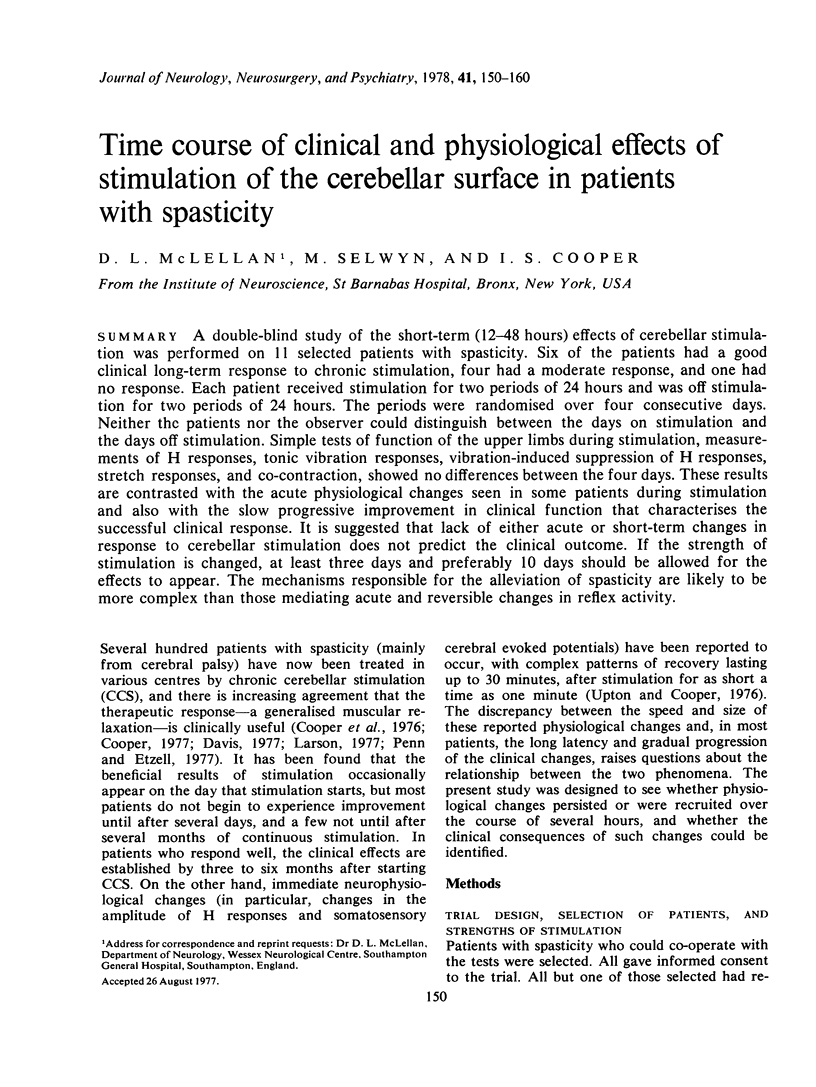
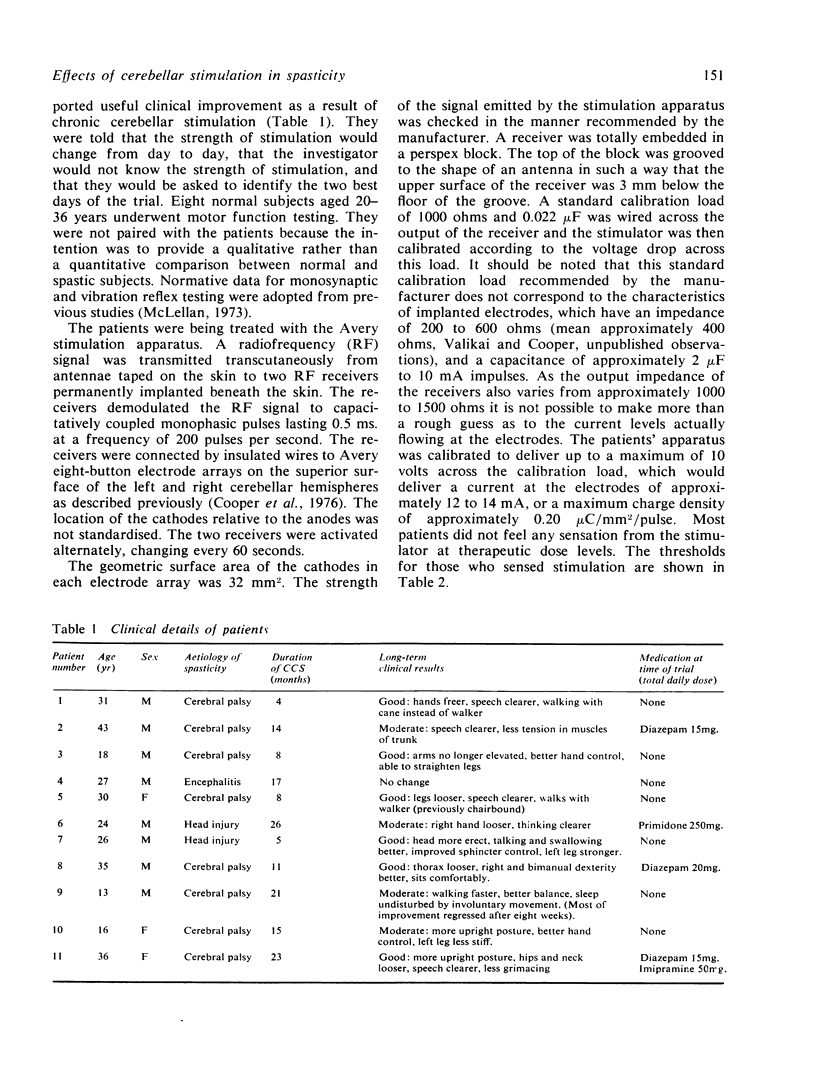
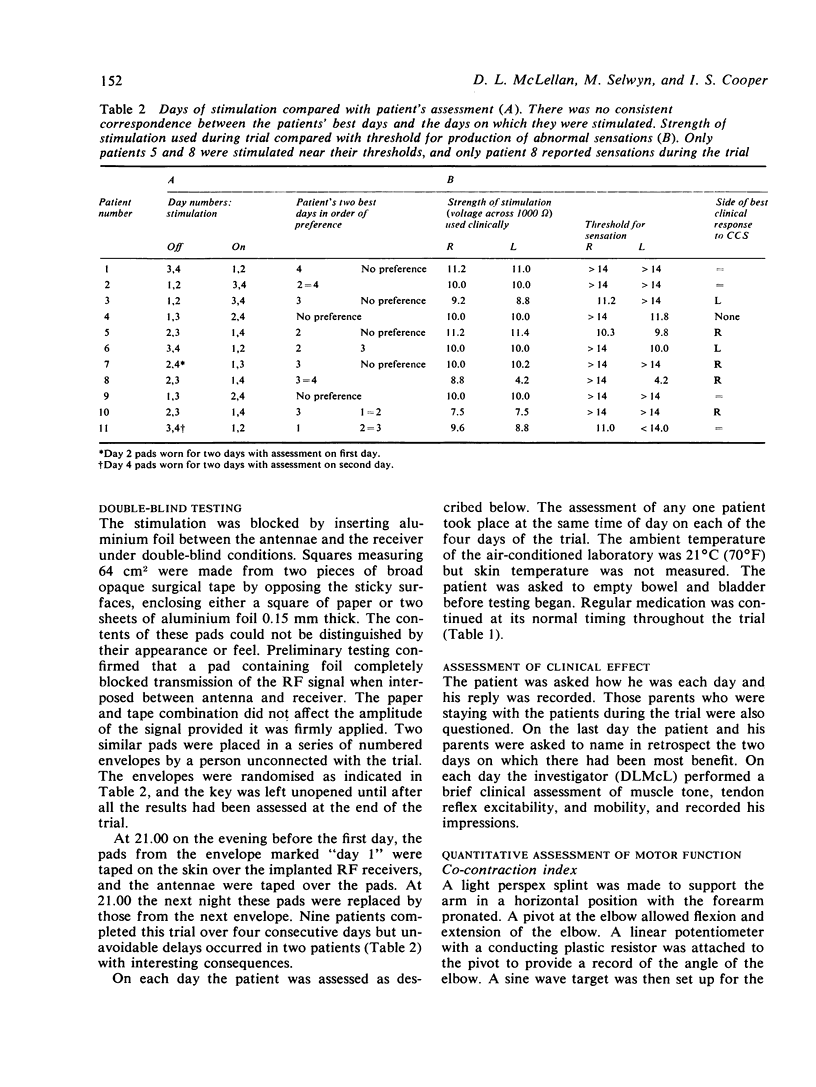
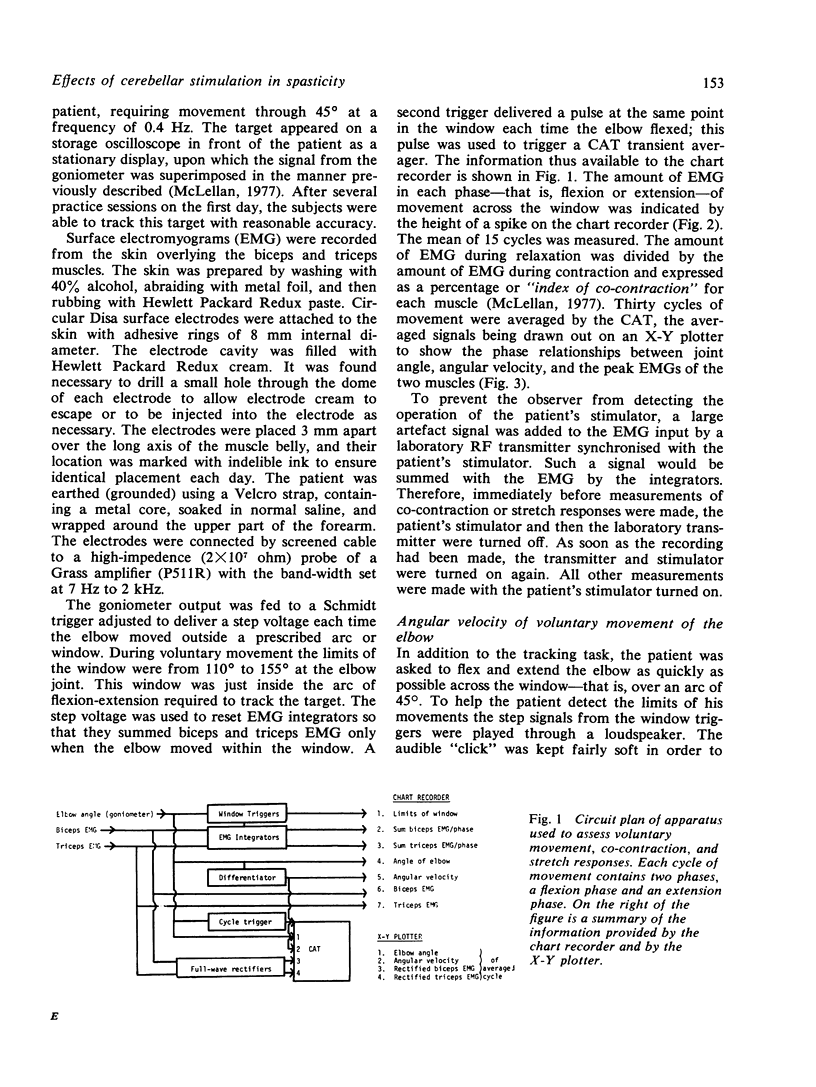
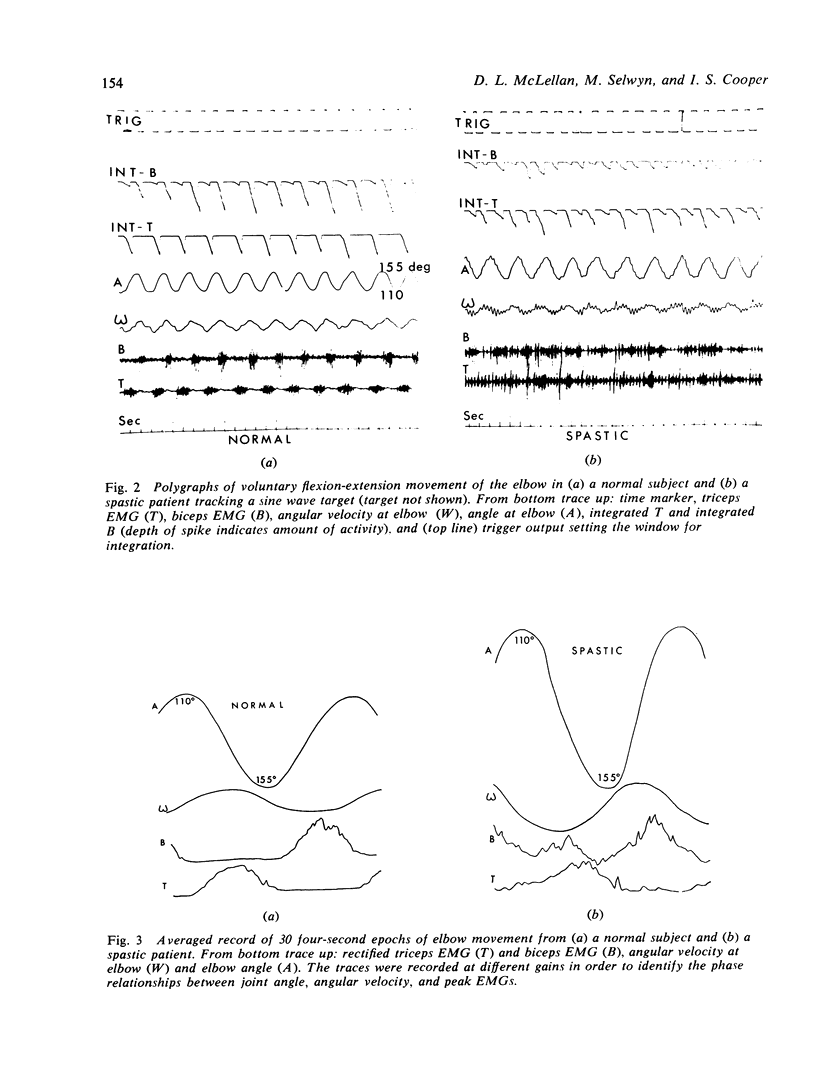
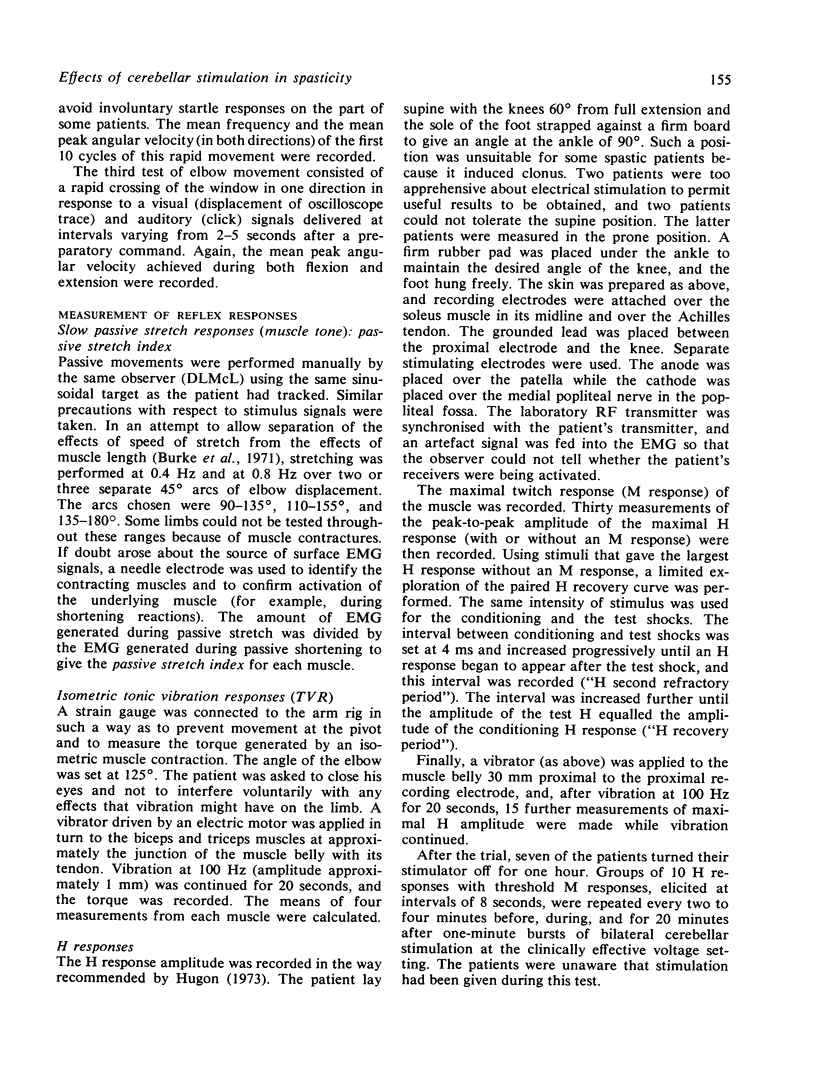
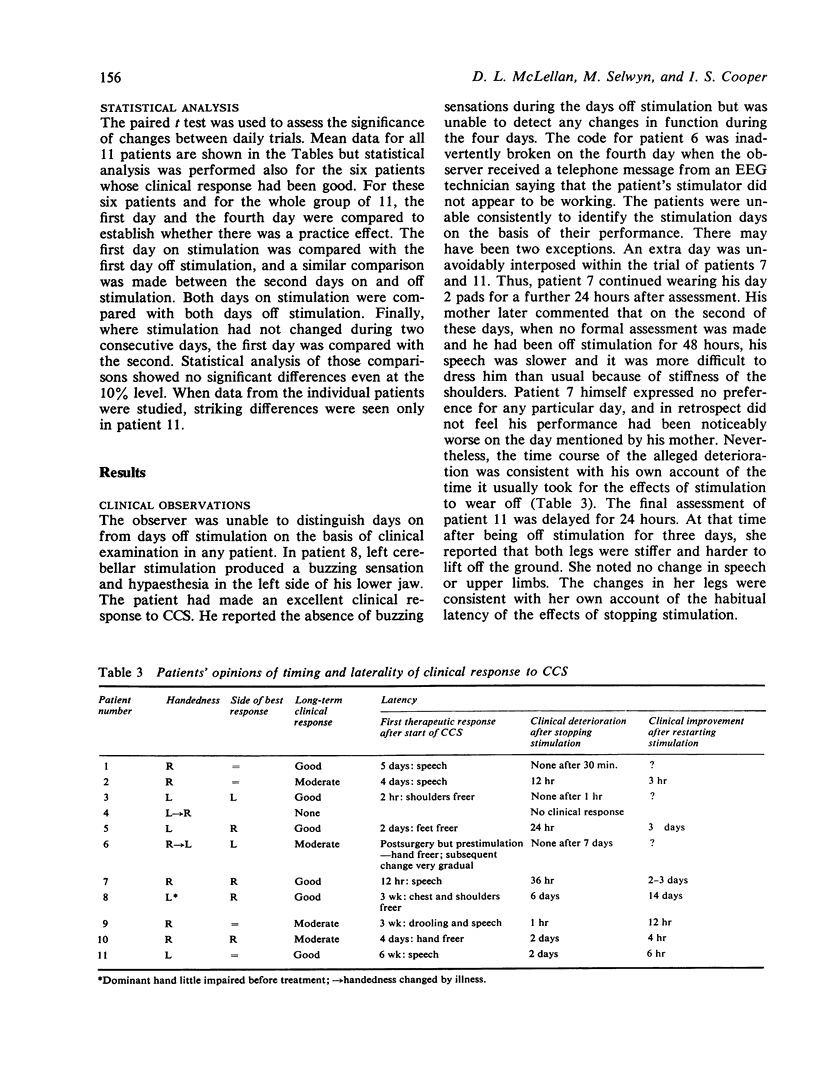
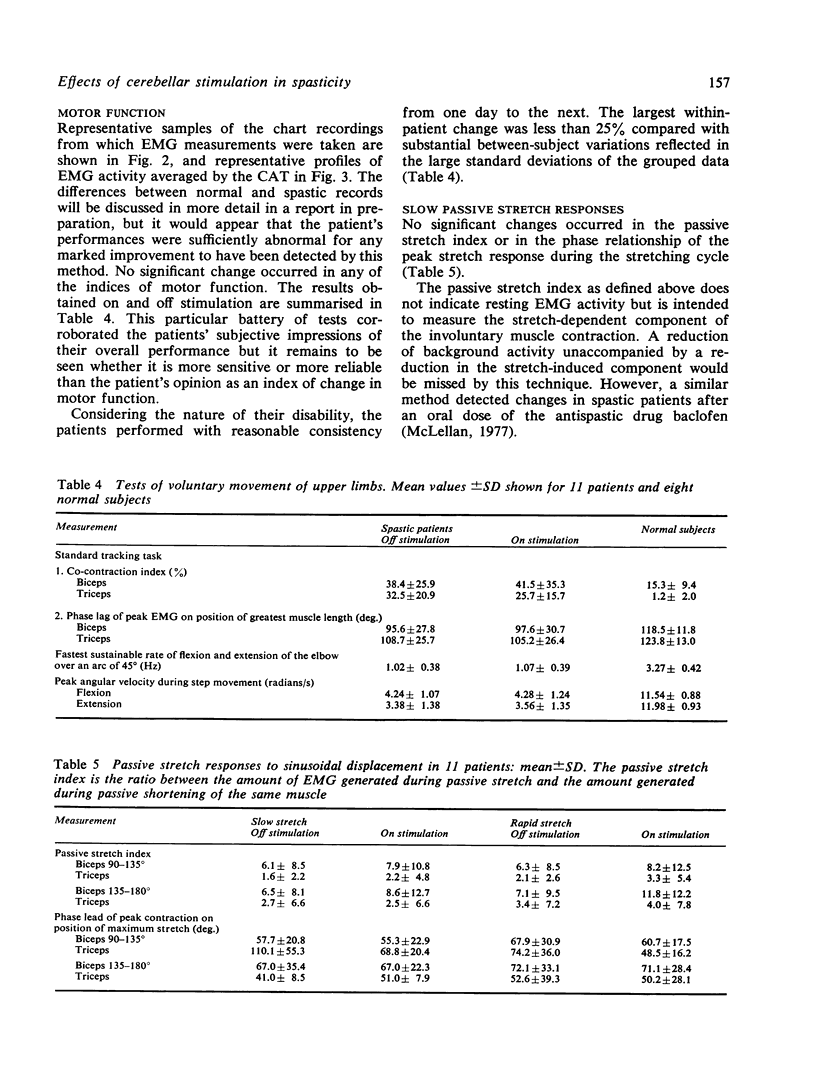
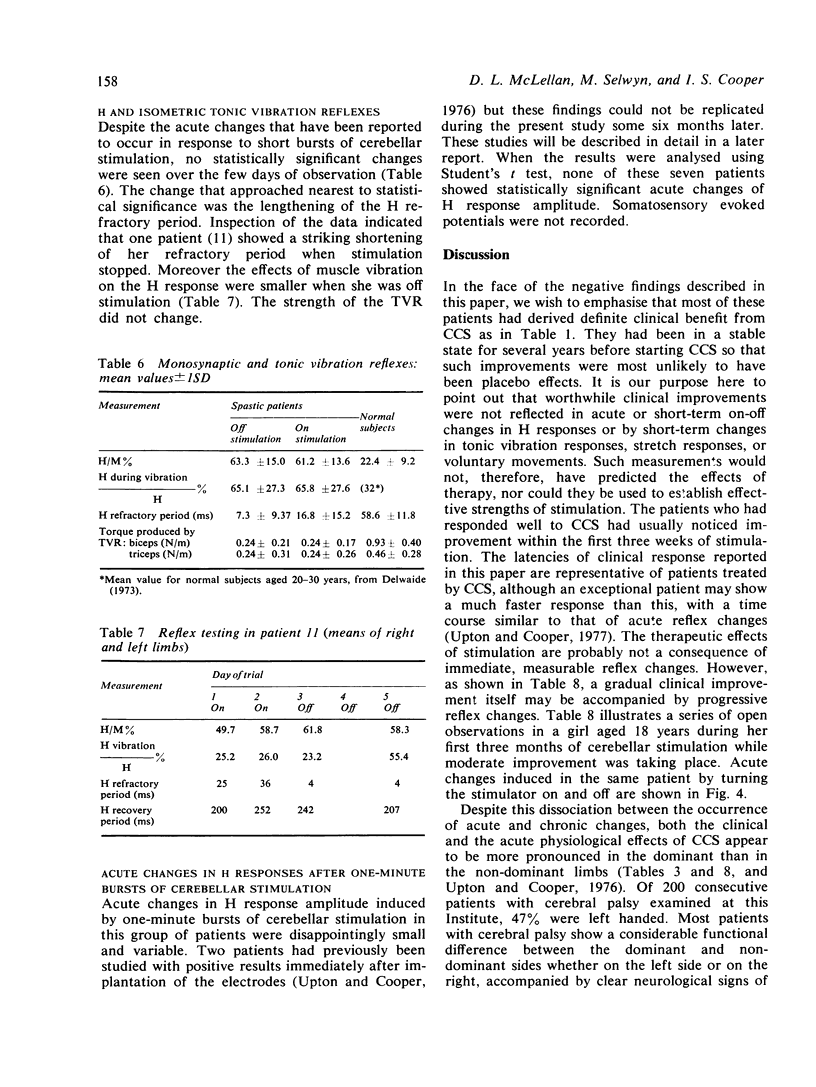
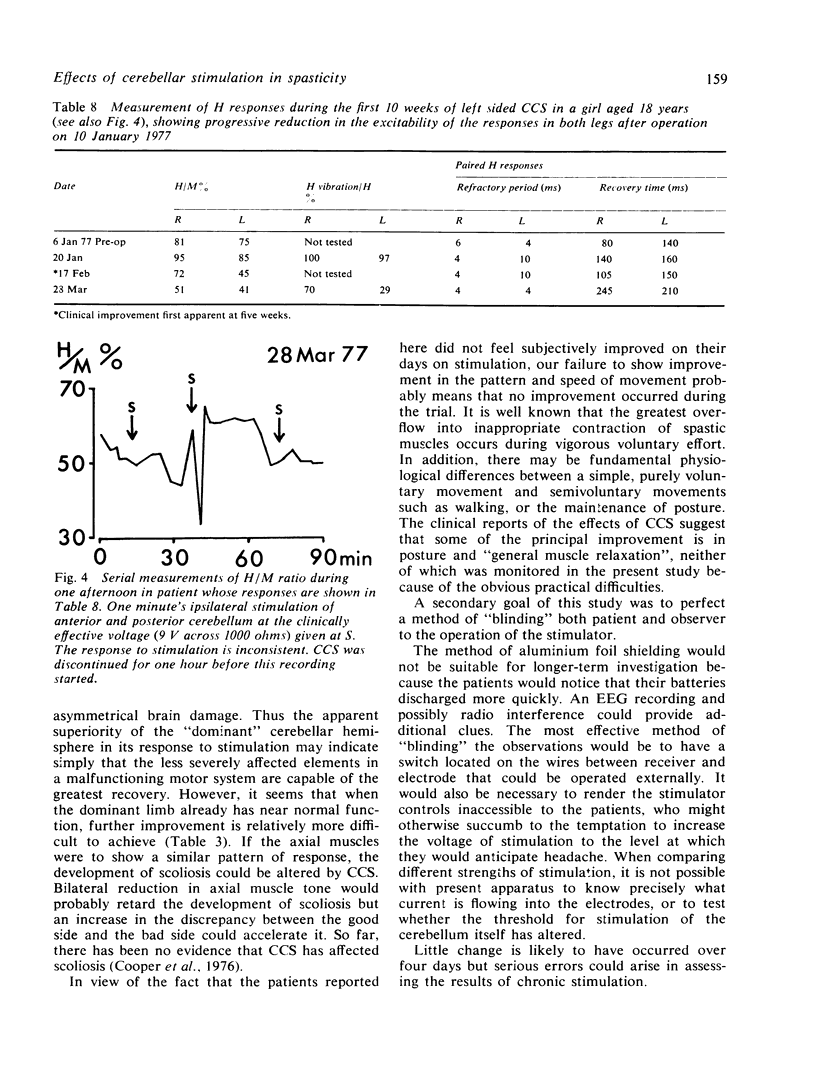
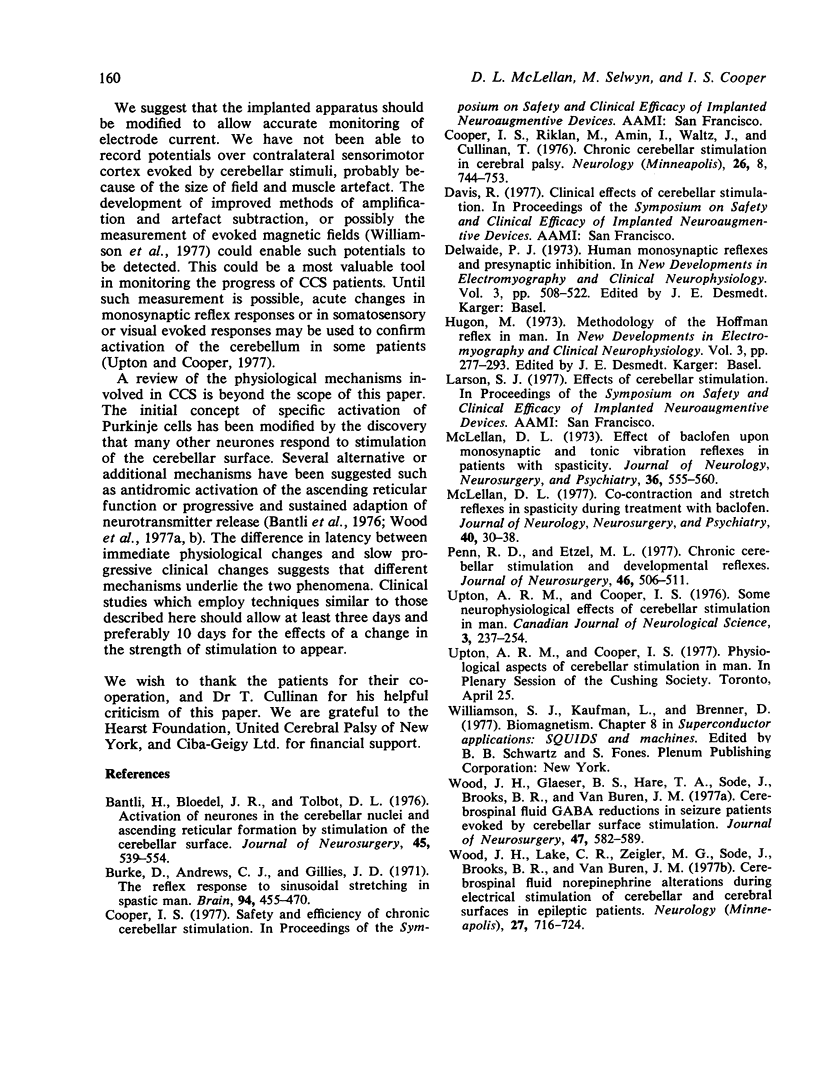
Selected References
These references are in PubMed. This may not be the complete list of references from this article.
- Bantli H., Bloedel J. R., Tolbert D. Activation of neurons in the cerebellar nuclei and ascending reticular formation by stimulation of the cerebellar surface. J Neurosurg. 1976 Nov;45(5):539–554. doi: 10.3171/jns.1976.45.5.0539. [DOI] [PubMed] [Google Scholar]
- Burke D., Andrews C. J., Gillies J. D. The reflex response to sinusoidal stretching in spastic man. Brain. 1971;94(3):455–470. doi: 10.1093/brain/94.3.455. [DOI] [PubMed] [Google Scholar]
- Cooper I. S., Riklan M., Amin I., Waltz J. M., Cullinan T. Chronic cerebellar stimulation in cerebral palsy. Neurology. 1976 Aug;26(8):744–753. doi: 10.1212/wnl.26.8.744. [DOI] [PubMed] [Google Scholar]
- McLellan D. L. C0-contraction and stretch reflexes in spasticity during treatment with baclofen. J Neurol Neurosurg Psychiatry. 1977 Jan;40(1):30–38. doi: 10.1136/jnnp.40.1.30. [DOI] [PMC free article] [PubMed] [Google Scholar]
- Mclellan D. L., Maclellan D. L. Effect of baclofen upon monosynaptic and tonic vibration reflexes in patients with spasticity. J Neurol Neurosurg Psychiatry. 1973 Aug;36(4):555–560. doi: 10.1136/jnnp.36.4.555. [DOI] [PMC free article] [PubMed] [Google Scholar]
- Penn R. D., Etzel M. L. Chronic cerebellar stimulation and developmental reflexes. J Neurosurg. 1977 Apr;46(4):506–511. doi: 10.3171/jns.1977.46.4.0506. [DOI] [PubMed] [Google Scholar]
- Upton A. R., Cooper I. S. Some neurophysiological effects of cerebellar stimulation in man. Can J Neurol Sci. 1976 Nov;3(4):237–254. doi: 10.1017/s031716710002535x. [DOI] [PubMed] [Google Scholar]
- Wood J. H., Glaeser B. S., Hare T. A., Sode J., Brooks B. R., Van Buren J. M. Cerebrospinal fluid GABA reductions in seizure patients evoked by cerebellar surface stimulation. J Neurosurg. 1977 Oct;47(4):582–589. doi: 10.3171/jns.1977.47.4.0582. [DOI] [PubMed] [Google Scholar]
- Wood J. H., Lake C. R., Ziegler M. G., Sode J., Brooks B. R., Van Buren J. M. Cerebrospinal fluid norepinephrine alterations during electrical stimulation of cerebellar, cerebral surfaces in epileptic patients. Neurology. 1977 Aug;27(8):716–724. doi: 10.1212/wnl.27.8.716. [DOI] [PubMed] [Google Scholar]


